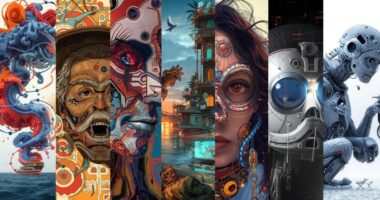AI Creativity Reaches a New Level
The year 2025 marks a turning point for artificial intelligence in creative industries. What began as experimental AI art tools in the early 2020s has now evolved into powerful real-time video generation models capable of creating entire cinematic scenes from a single sentence. Platforms like Pika Labs Gen-3, Runway Alpha, and Google Veo are reshaping how content is produced across YouTube, film studios, and digital marketing agencies.
For creators, this means one thing — speed and imagination are now limitless. Instead of spending hours editing, you can simply describe your vision, and the AI handles lighting, motion, transitions, and even emotional tone.
The Explosion of Real-Time AI Video Generation
In 2025, AI systems are no longer static. The newest generation of real-time diffusion models allows users to manipulate videos as they’re generated. Imagine being able to move a camera, change a character’s emotion, or adjust sunlight while the AI creates the video — all live, without rendering delays.
What’s Fueling This Breakthrough
-
⚡ Improved GPU Efficiency: Cloud AI platforms now process 4K scenes at 60 FPS in seconds.
-
🧠 Adaptive Prompt Understanding: AI models interpret not just words but emotional context.
-
🎨 Dynamic Style Engines: Real-time style transfer means your video’s tone can shift from cinematic to anime instantly.
-
🌎 Collaborative Cloud Systems: Teams can now co-edit AI-generated scenes together online.
Top Players Leading the AI Video Race in 2025
The competition in the AI creative market has intensified. Tech giants and startups alike are pushing the limits of synthetic media.
1. Pika Labs Gen-3
Pika Labs’ latest update introduces true real-time text-to-video rendering. You type a prompt like “a dancer in neon rain under Tokyo lights” — and the result appears instantly in 4K.
2. Runway Alpha
Runway’s Alpha platform combines editing, effects, and storytelling in one place. Its “AI Director Mode” allows creators to make full short films with dialogue, camera paths, and voiceovers all powered by AI.
3. Google Veo
Google’s Veo has become the gold standard for cinematic realism. It blends Google DeepMind’s physics simulation with advanced video synthesis, offering movie-level realism with zero human post-production.
How AI Is Redefining the Creator Economy
The explosion of AI video tools is creating new opportunities for both professionals and everyday users. Freelancers are producing ad campaigns in hours. YouTubers are crafting virtual worlds without leaving home. Even small businesses are using AI-generated videos for social media marketing — all with minimal cost.
By 2025, the creative gap between big studios and independent creators has all but vanished. The playing field is finally even.
Challenges Ahead: Ethics and Authenticity
While innovation thrives, the rise of AI video creation also brings deepfake and copyright concerns. Experts urge creators to disclose AI usage transparently and respect the boundaries of human creativity. Governments are already drafting AI authenticity labeling laws, requiring AI-generated media to include metadata tags confirming their origin.
Conclusion
Artificial Intelligence has transformed from an assistant into a full-fledged creative partner. With AI video models leading the charge in 2025, creators now have the power to produce breathtaking visuals in real time — redefining how stories are told.
As AI creativity continues to evolve, one truth remains clear: the future of video is not just about technology — it’s about imagination unleashed.









